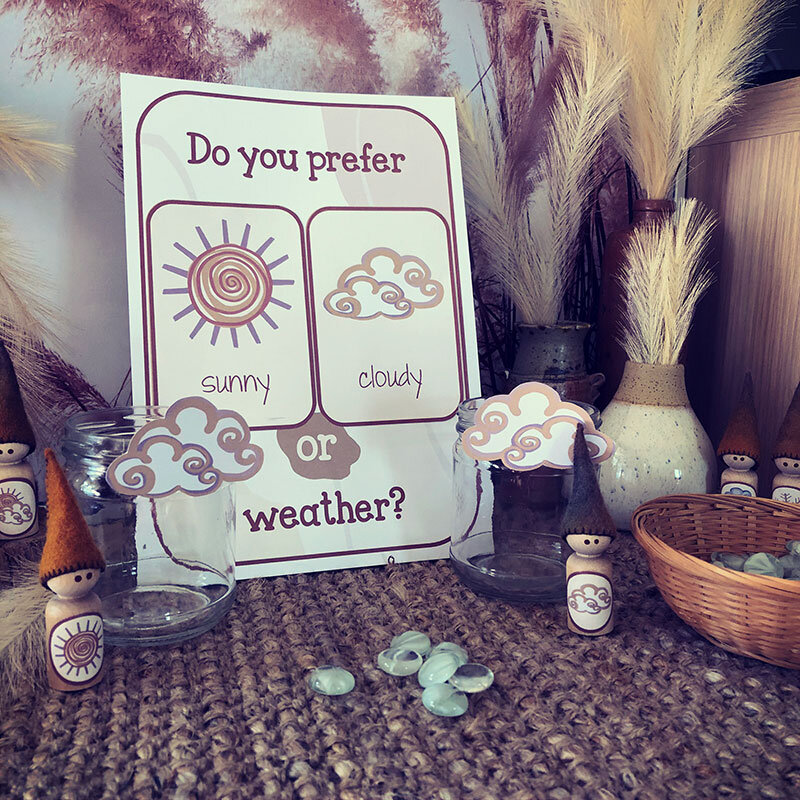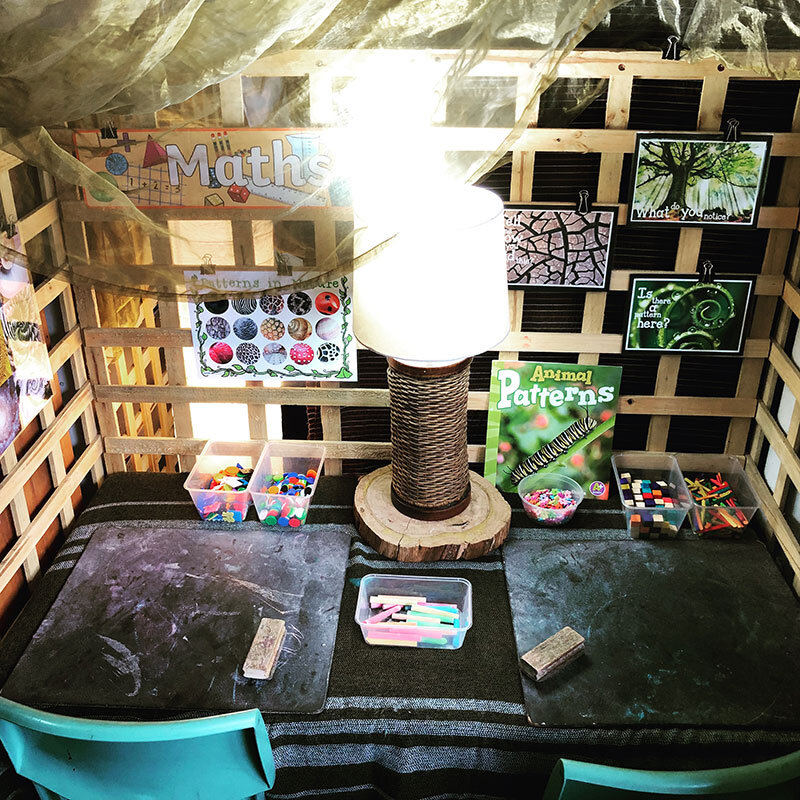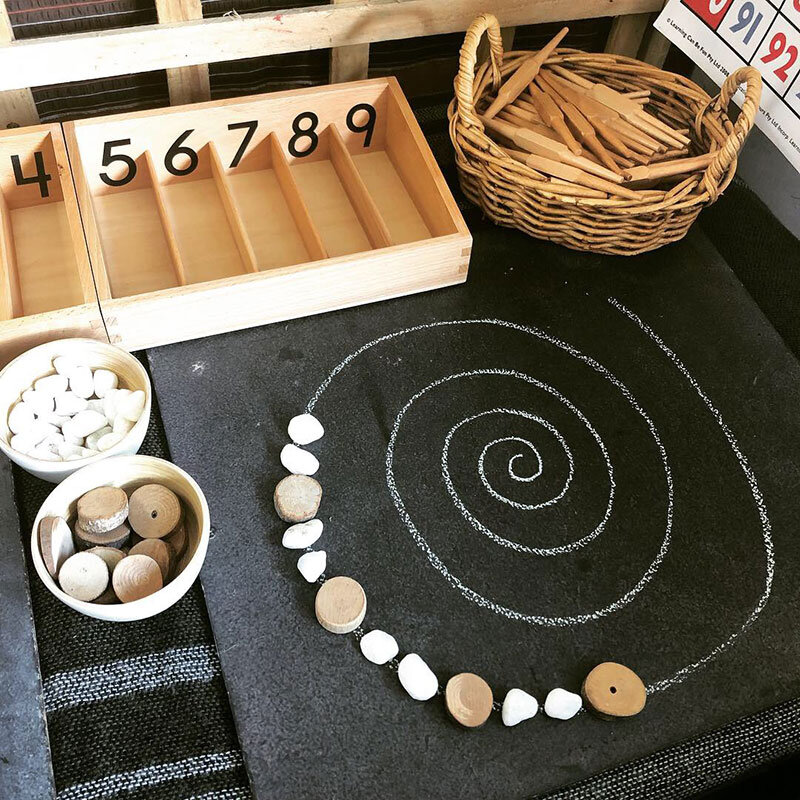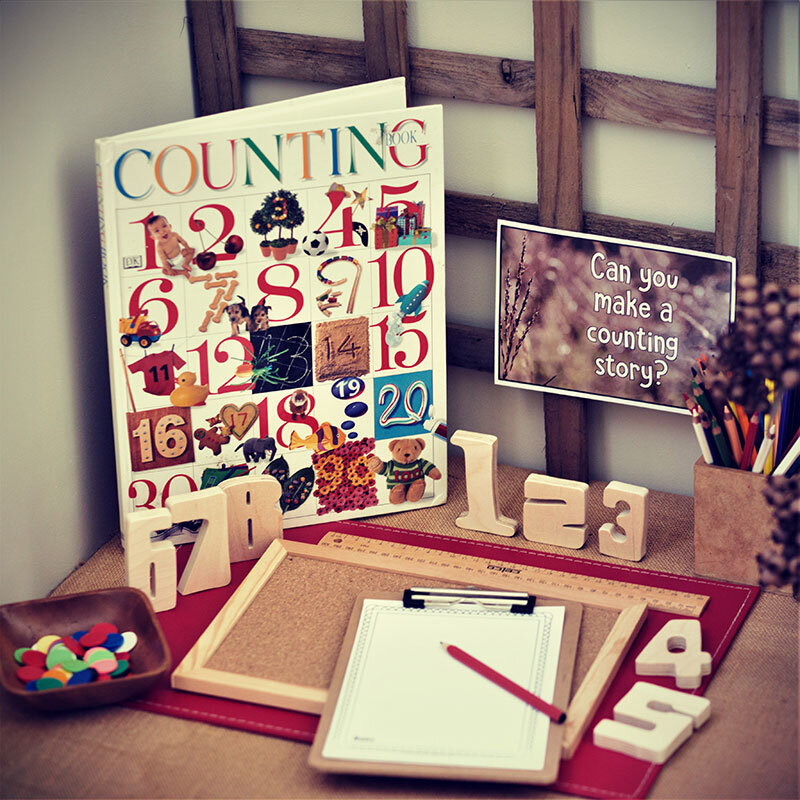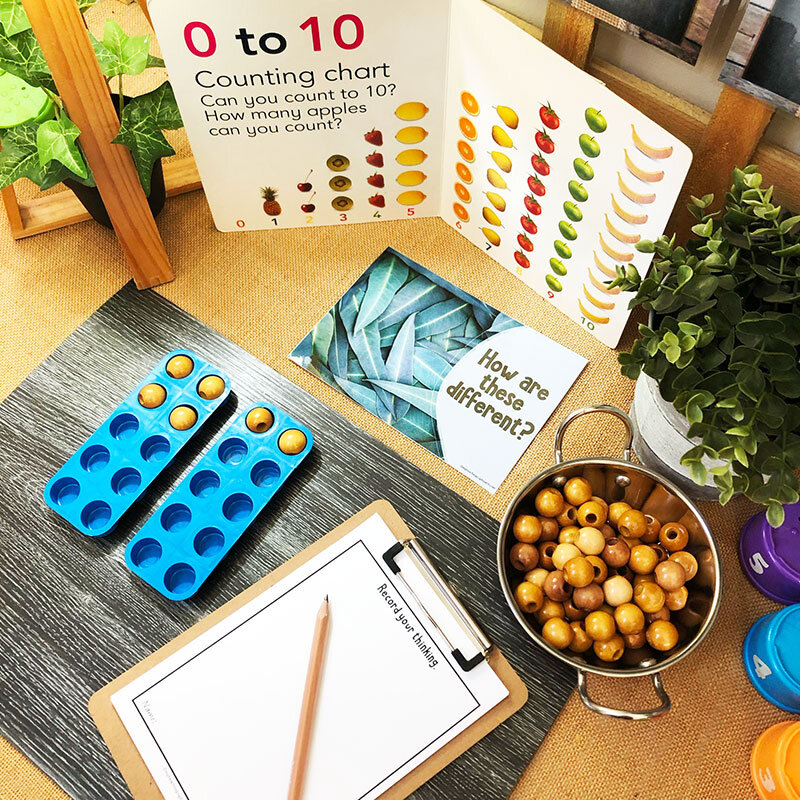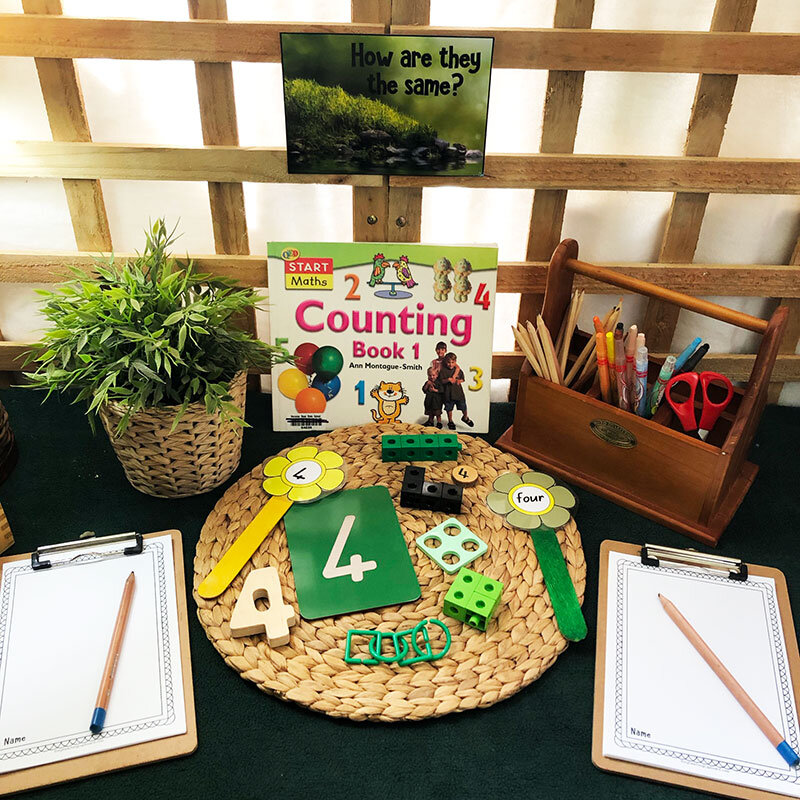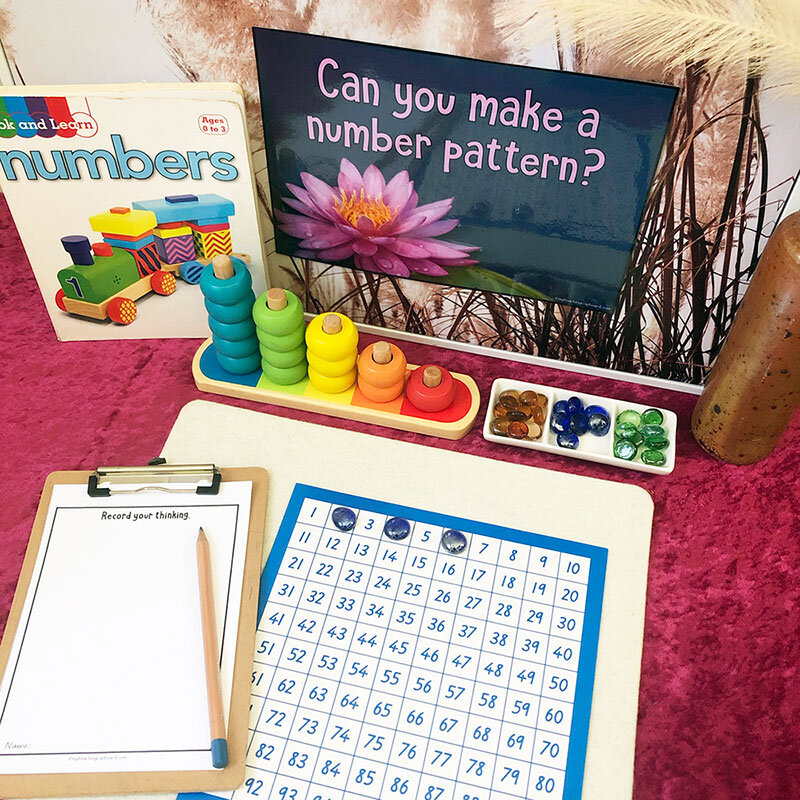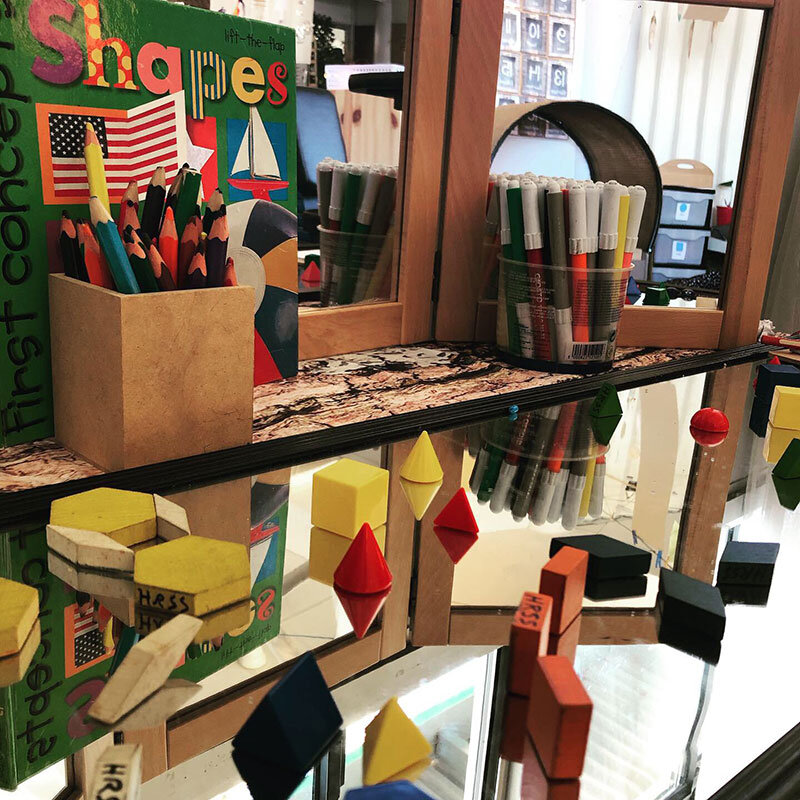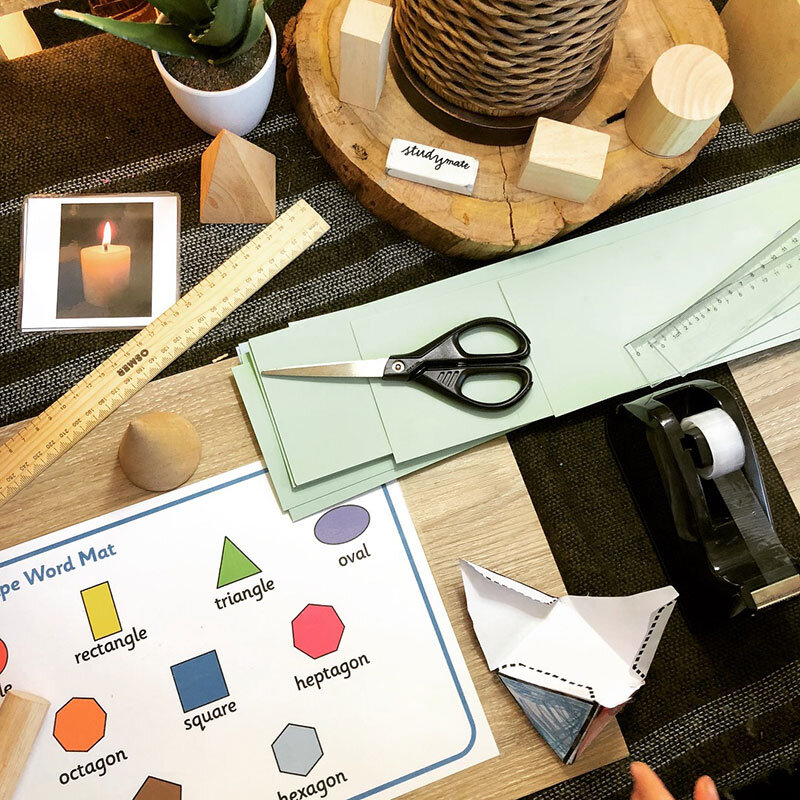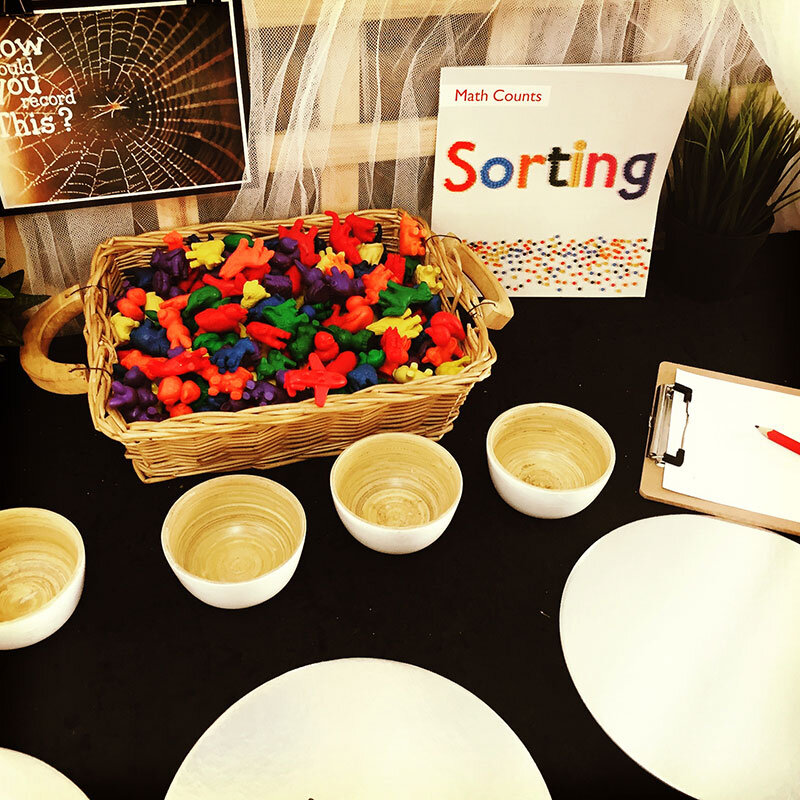Reggio Math Provocations
Are you thinking about setting up some Reggio math provocations in your early years learning environment?
In this blog post you will discover what a math provocation is, how to plan your math provocations and also get some practical Reggio inspired math provocation ideas along the way.
This blog post will help you to set up some simple but engaging and educational kindergarten and preschool math provocations in your classroom. You will have your children engaged and learning in no time.
Provocations Definition
Are you wondering “what is a learning provocation? A provocation can be defined as the intentional act of causing someone to feel, think or begin to do something.
Most teachers first find out about learning provocations when they are introduced to the Reggio Emilia Approach to learning. This play-based, child-centered approach to early childhood education uses learning provocations extensively throughout their learning environments.
In Reggio Emilia classrooms, learning provocations are the intentional invitations or investigation areas a teacher sets up in the learning environment. These learning invitations or provocations for learning are designed to provoke the students to explore an idea or concept with materials that have been carefully chosen to ignite wonder and thinking.
You can learn more about what a learning provocation is and the difference between a learning provocation and a learning invitation HERE on this blog post : What is a Learning Provocation?
What is a Reggio Math Provocation?
Reggio math provocations are specifically designed learning provocations which will provoke your children to investigate, explore and practise mathematical concepts and thinking. You can use math provocations in your classroom as effective teaching tools for the maths curriculum.
Reggio math provocations are always intentionally and thoughtfully designed by the teacher. They are a purposeful strategy for teaching your math curriculum learning intentions. They can be based on students’ interests, linked to your curriculum and also be used to inform your assessment.
Reggio learning provocations for mathematics tend to be quite open ended. They should provide your children with opportunities to engage with mathematical learning resources and mathematical content at their individual level of understanding.
How can you use math provocations in the classroom?
I use math provocations extensively throughout my play-based classroom. They are so versatile and so engaging, no doubt you will want to use them all the time too!!
Math provocations can be a lovely way to start the day, especially if you have children coming into the classroom before the bell and the official start of the official school day. Teachers often put out “tabletop activities” first thing in the morning as a gentle way to transition into the school day. Math provocations are perfect for these early morning tabletop activities.
If you follow an investigative play-based pedagogy such as the Walker Learning Approach or the Reggio Emelia Approach, you will no doubt have a designated math table or learning area in your classroom. Math provocations play a vital role at investigative learning areas. Setting up a thoughtfully designed math provocation in this area would be the perfect strategy for teaching and practising your current math learning intentions.
Math provocations are ideal for small group math rotations, guided math lessons or math workshop or centers too. Because the resources in learning provocations are open ended and with no right way to use them, the children will be much more engaged than if they were given a structured activity or worksheet. Open ended materials will sustain your children’s attention for an extended period. This is not only a valuable learning experience, but you will be much more likely to spend your guided math time teaching rather than managing behaviour.
Reggio Inspired Math Provocations
Reggio inspired mathematics should not be confused with your traditional math centres or stations. They are very different. Traditional learning centers are usually task-focused and teacher directed. Reggio inspired math provocations are designed to invite students to engage with the materials and to provoke their mathematical thinking.
Reggio inspired provocations for learning are offered to children to draw them in and engage them with the mathematical materials and ideas. Your math provocations should be thoughtfully curated and beautifully presented. They should be an invitation to explore, investigate, learn, represent and create.
Most Reggio educators provide labelled and organised math resources which are easily accessible to the children. The math resources are set up at a math table or math investigation area where the children can easily see and use all the materials and often are accompanied with printed math provocation questions to encourage specific learning outcomes.
If you are interested in beautiful Reggio inspired math provocation prompts, you will LOVE these…
Loose parts and natural materials are commonly used as math resources in Reggio classrooms. There is a myth that if you offer children all natural resources and design an aesthetically pleasing environment rich in natural materials like wood, plants, cotton and muslin or hessian, you are implementing a Reggio inspired pedagogy. This is NOT how you implement the Reggio philosophy.
Reggio inspired practices include
connectedness (culture, community and the environment)
an emergent, inquiry-based curriculum
the 100 languages of children etc
Math provocations and the materials you offer are only one part of the Reggio Emilia Approach. Reggio pedagogy considers the local culture, community and has place at its core. It is very much an emergent curriculum with child led projects and investigations offered in an environment regarded as the third teacher. If you are interested in learning more about how you can set up your environment as the third teacher, you might be interested in this blog post: Environment as the Third Teacher.
Teacher Tip
If you model the use of the resources and the learning intent you have in your guided math lesson and then put those same resources out in a math provocation, the children will be much more likely to use the resources the way you are hoping they will. This is a way to encourage your children to practice specific skills and strategies you may be working on. If you have specific learning intentions you really need to focus on and you feel your children would benefit from lots of practice with a certain mathematical skill or concept – model first!
If you implement this tip however, you might be missing out on some valuable opportunities to observe and learn more about your children. If you offer the resources without first modelling or suggesting how to use them, you will have the chance to observe your children and discover new ideas and ways of thinking. Given the opportunity, your children will come up with educational and age-appropriate activities on their own. The children can surprise you sometimes with the way they think and engage with different resources, so I always like to put the resources out during investigation time about a week before I have planned to use them in a guided math lesson.
What Do Math Provocations Look Like?
When setting up a math provocation, most teachers use a direct prompt written or printed onto card and displayed at the learning invitation. You do not have to use printed prompts to provoke mathematical thinking. You can use photographs, quotes, strategically placed materials, video clips, pieces of art, a tool or a book.
How to Plan Reggio Math Provocations
When you are planning your math provocations, you must plan with intention. To cover mandated curriculum, you can use your math curriculum learning intentions as a starting point for your math provocations. It is always advisable to consider your student’s developmental needs and interests too. New learning provocations should be based on your previous observations and notes.
When planning your math provocations, think about the resources you have available and if need be, need to source. Consider which materials you should begin with, and which materials will invite the desired exploration.
Keep in mind the collaboration aspect of learning. You want the children to have the opportunity to work together and build knowledge together. They can observe each other, co-construct knowledge and learn from each other. Peer tutoring is powerful.
You will be building a strong classroom community where every member is valued and respected if you provide opportunities for and encourage collaboration and discussion in your planning. This is also the perfect way to develop oral language and in particular, mathematical metalanguage.
What math learning intentions are you hoping to have your children learn?
How will you provoke the thinking related to your learning intention?
It is worth thinking about and planning possible question prompts you could ask in order to prompt desired mathematical thinking and discussion.
For example, if you are addressing the number content description: Establish understanding of the language and processes of counting by naming numbers in sequences, initially to and from 20, moving from any starting point (ACMNA001)
What question prompts could you ask in order to prompt counting?
What materials could you offer that will encourage counting?
You could use a direct prompt (like: how could you count these?) or you can imply the desired math activity by modelling the counting of the resources in a tuning-in session or in a previous guided math lesson.
Here are some suggestions you might like to use in your learning provocation prompts:
What stories live in…?
What do you notice? What do you wonder?
What connections do you see?
What happens when …?
How many different …?
How do these materials help you think about…?
Where do we see … in our world?
If you are looking for Reggio Math Provocations, you will LOVE this pack. There are 88 math provocations to teach ALL the Number and Algebra content descriptions for ACARA Foundation Stage. These hands-on learning invitations will make your play based math investigation areas quick and easy to set up.
All the math provocation prompts you need to set up hands-on Number and Algebra investigation areas in your Kindergarten or Prep classroom.
Sometimes you can just put the resources out for open-ended play and exploration. If you do, use this exploration time as an opportunity to observe and learn what your children can do and what their needs are. Use your observations to plan future math provocations.
Consider how you think the children will use the resources but please don’t plan for the children to use them in a specific way. The whole purpose of offering math provocations is to provide hands-on, open-ended, child-centered, age-appropriate learning experiences. Trust your children to work at their developmental level. They will naturally use the materials in a way which will optimise and personalise their learning.
You should consider the children’s wonders and interests when planning your math provocations. If you can use resources which are of particular interest to your children, they will be much more likely to engage with them.
This is the perfect way to encourage targeted children to an area. You probably know the child that will most benefit from a certain math provocation, so if you can put something in the space that will attract that child, you are certainly going to have a much higher chance he/she will visit and engage with the planned provocation.
It is essential that the Reggio inspired math provocations you plan and provide are responsive and reflect your classroom community. Remember the Reggio Emilia Approach considers the local culture, community and has place at its core. Consider the cultures and traditions of your classroom and local community so your math provocations are respectful and inclusive.
When planning math provocations, it is important to consider how the children will make their learning visible.
How will you enable the children to record and share their discoveries?
What will their documentation look like?
How will you record their learning?
How will you collect evidence for reporting and future planning?
This is an important part of the planning process. Consider and plan what observations you hope to make and how you will record your observations. I like to carry a clipboard with me at investigation time to remind me to take observational notes and so that I have a designated place to record my observations.
I find it is also very useful to have a camera ready to take photos. These visual documentation records are so valuable for prompting my memory at the end of an exhausting day. A picture is worth a thousand words! The photos I take are valuable evidence of learning and often referred to at parent/teacher conferences too. Think about what mathematical thinking and evidence of learning you will be looking for. How will you know that your children really are understanding?
What is the Teacher’s Role in Reggio Math Provocations?
In the Reggio Emilia Approach, the educators have clear roles. Reggio teachers are observers and collaborators in the learning.
The teachers of Reggio Emilia are responsible for designing the curriculum and assessing the children. They are often referred to as documenters of learning. We can learn from their observer roles. As teachers trained to teach and scaffold learning, it is sometimes difficult to know when to join in or when to interrupt a child’s train of thought and learning.
I tend to look for invitation cues from the children and only join in when I’m invited. Sometimes that invitation will be a loud call for help and other times it will be a subtle smile or brief eye contact. You know your children and their personalities. Trust your teacher heart to know when to join a child’s investigation.
While you are making your observations, or later in the day when you are reflecting on your notes, plan the possible next steps in the children’s learning process. What prompts might you need to extend the children’s learning and how you could change the invitation or the materials.
Simple Math Provocation Ideas
Here are some simple play based math provocations from my kindergarten and first grade classrooms. You might like to look over them for some ideas or inspiration to set up your own hands-on learning provocations. They are quite simple and easy to set up.
Reggio inspired math provocations will provide your children with a multi-sensory experience and help them to develop and represent their mathematical thinking in an age-appropriate way. These math provocations are an ideal way to teach the core math content descriptions and learning intentions outlined in your math curriculum.
You will notice your will children will really enjoy exploring and learning through your Reggio math provocations and you will notice that they will have a growing confidence to share their thinking during math discussions.
If you like this blog post on Reggio Math Provocations, please consider sharing it...
Just CLICK the sharing box below.👇














